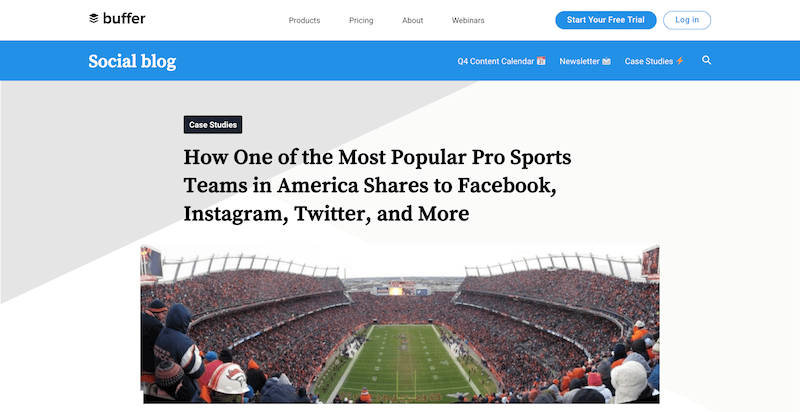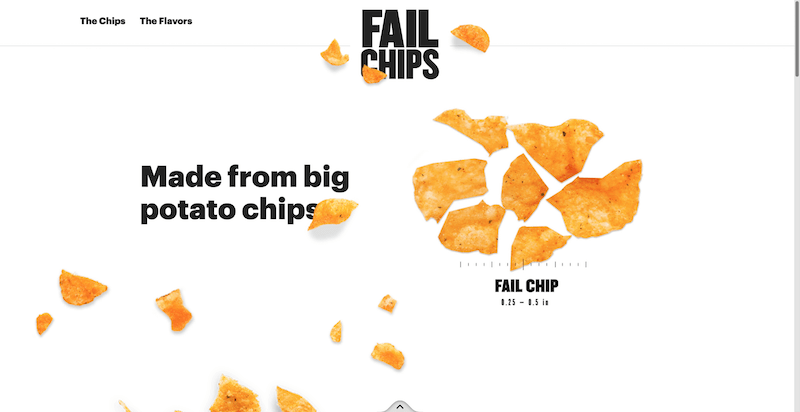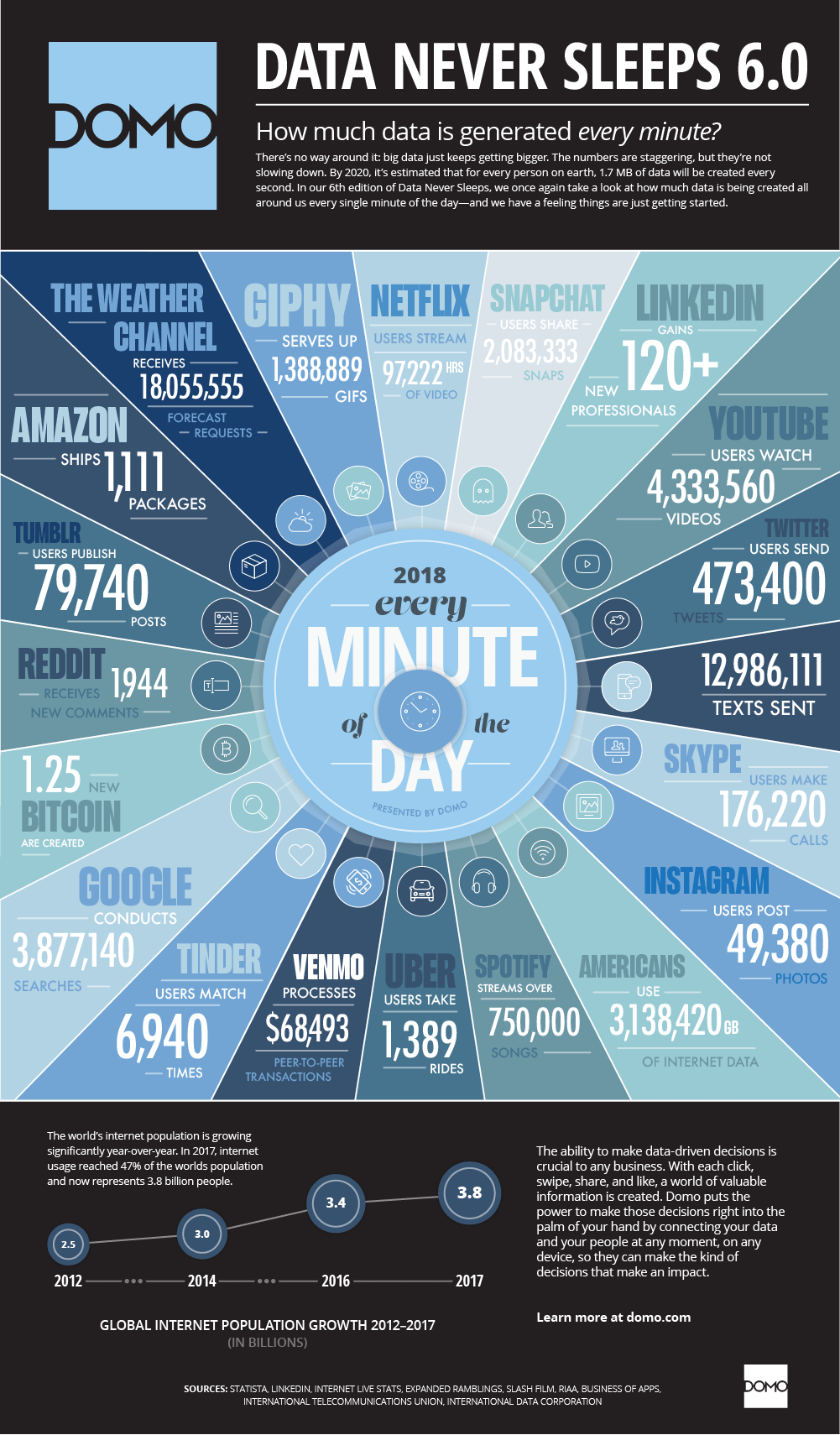
What is Engaging Content? (How to Write Captivating Content)
Jan 29, 2019|Read time: 8 min.
Key Points
- Engaging content leads to greater engagement.
- RankBrain is the third most important ranking signal and rewards engaging content.
- Make your content more engaging! Add stories, case studies, fun visuals and interactive media.
Groove, a helpdesk software startup, launched a content strategy with a blog at the centerpiece of its digital marketing. The blog walked readers through the new company’s growth, month by month, with extreme transparency. The readership results were good, but the company wanted to create more engaging content.
So they A/B tested the post “How We Got 1,000 Subscribers from a Single Blog Post in 24 Hours.” They wrote one version with a story as the intro to the post, and another with no storytelling aspects.
Guess what happened?
The storytelling post generated 300% more scrolls to the bottom. And the average time on page was a whopping 5X higher. Now THAT’S what I’d call engaging content!
Same post with the only difference being a story. Storytelling is one massively effective way to captivate your audience and drive higher content engagement rates.
Content Strategy Playbook
The Fortune 500 CMO’s guide to content strategy.
What is engaging content, exactly?
“Engaging content” is copy that draws in your readers. It stimulates emotions, provides actionable advice and keeps users intrigued so they read every last word.
But that’s not all. Truly captivating content also prompts readers to take action. That’s critical if you want them to share, link, bookmark or fill out a form.
Take a moment and think about all the content that you produced over the years. How much of it is pure gold? Or does it put you right to sleep? It’s time to kiss the dull stuff goodbye and earn more ROI with content marketing that drives SEO results.
Don’t worry. You won’t have to nuke your entire blog strategy to create engaging content. Instead, start with the content you already have.
Ready to transform your dull content into captivating content? Let’s get started!
Consumer Connections Newsletter
Exclusive insights, trends, and actionable brand strategy, direct to your inbox.
How to spice up your content strategy
I’ll bet that some of your old blog posts probably don’t rank well in the search engines. Whether Google views them as thin content or just “meh,” those posts aren’t doing you any favors. So why not shine up your content strategy to improve user experience as well as search visibility?
Look for content that ranks on the second or third page of search results. Google recognizes that it has some value, but not enough to land a spot on page one.
That type of content represents a potential gold mine of organic search traffic for you. If you can incrementally increase the value of the content and make it more engaging to readers, there’s a chance it will steadily climb the search rankings.
How can you improve the value? Here are a few methods…
Modernize the content
If you have content that’s four, five, or even 10 years old, dust it off and update it. Consider a new introduction and any new points to be made. Explore the inclusion of new information based on new technology, new research, new stats, new stories, new interviews, new quotes, new examples, new…well, everything, and explore ways to delete older content with information that’s fresh and modern.
It’s just as if you took your 1965 Ford Mustang and made it lightning fast with performance tires, lighter rims for less drag load, 3.73 rear gears, cold air induction, an aluminum driveshaft, etc. You’re not turning it into a Camry. Rather, you’re making your Mustang a better, faster, and more modern Mustang.
Incorporate case studies
Providing real-life case studies that relate to your topic is a fantastic way to capture readers’ interest. It puts flesh and blood on your concepts and allows readers to better understand abstract points.
Additionally, case studies can attract links from other websites, which is also a major factor in where your content ranks in the search results.

Buffer (a social media scheduling platform) is a master of case studies. They’ve partnered with the Denver Broncos, Business Insider, Fortune, and numerous other organizations to create in-depth case studies about optimizing social media usage. They not only include the situation and solution, but they add flavor with direct client quotes and statistical results.
Add stories
Just as the Groove blog experienced higher engagement when stories were added, you can use stories to transform your old, dull, personality-less pieces into great content. People are hard-wired to like stories. Use them to captivate your readers and drive them to greater engagement and action.
Keep it fun
So much content online is boring, dull, and uninteresting. Adding in elements of fun (where appropriate) is a fantastic way to set yourself apart from your competitors. Obviously, this needs to fit the overall tenor of your brand, but some possible options include:
- Jokes
- Funny stories
- Humorous images
- Mind boggling stats
- Video content
- Games
Case study: how MailChimp uses fake products to create fun, community-driven, engaging content
MailChimp, the email marketing software company, created an ad in which the producer would ask people on the street to read a script. One pedestrian she recruited had sincere difficulty pronouncing the company name.
Rather than take offense, MailChimp decided to have fun with the flub. They launched the “Did you mean MailChimp?” social campaign with the hashtag #MailKimp. The campaign centered on nine name variants, each with its own website and fake (but hilarious) product offering. The names included FailChips, NailChamp, and MailShrimp (not to mention MaleCrimp and KaleLimp).

FailChips offered bags of crumbled potato chips. Per the website:
“How do you eat them?
“Our packaging is designed with one-handed chip-chugging in mind. Just tear off the corner, and then pour the chips straight into your mouth.
Now, if you’re wondering how to eat things in general, that’s a separate and more troubling question.”
Revitalize your existing content strategy template by taking your dingy and dusty content, and see if you can put a fun spin on it that will help your brand stick in the minds of your current and potential customers.
Add impactful imagery
Approximately half of the human brain’s neurons are dedicated to vision. In fact, the human brain processes images 60,000 times faster than text.
Adding images, videos, and other visual media that enriches the experience can keep readers on the page longer, hold shorter attention spans, and deliver greater value to them. For example, adding an infographic that illustrates an article’s main points transforms the piece of content into a piece that’s intriguing, engaging, and makes it easier for readers to digest the big picture.
Want to dig deeper? Check out these great video SEO techniques to dominate YouTube and the SERPs!
Case Study:
Let’s look at how software company DOMO uses visual content to make huge data sets relatable and digestible

DOMO, a dashboard software company that helps to “create a digitally-connected organization,” periodically publishes an infographic displaying the number of activities online in an internet minute, documenting the increase in frenetic activity by an always-on population (e.g., 3,877,140 billion Google searches every minute, etc.).
The “Data Never Sleeps” infographic generates a great deal of online sharing with each new iteration of the data analysis, and on top of this generates a significant number of inbound links from high profile sites such as AdWeek, Yahoo, Inc., Social Media Today, and Business Insider.
It’s amazing how just about any data set can be converted into a visualization. For example, an infographic outlining how the top five tech companies make their billions was shared more than 26,000 times over the past year alone. (That’s not a typo!)
Combine lackluster content to create amazing content
If you have several shorter posts that all speak to a similar subject, combining them into a single, in-depth post can result in a better reader experience and as significant increase in search rankings.
However, this isn’t about simply copying and pasting a bunch of text and republishing it. Creating high-quality content is about bringing the concepts together, organizing it in a way that will captivate and engage the target audience, and creating an enjoyable reading experience.
It’s crucial to always keep the reader in mind. It’s pointless to combine old content if it results in a jumbled mess that doesn’t pull the reader in. Creating something engaging means strategically combining your content so it speaks to more problems, answers more questions, and adds significant amounts of value.
Numerous studies have demonstrated that Google favors content that’s at least 1,000 words long and often populates the first page of search results with content around 2,000 words each. This isn’t because Google likes words for the sake of words. It’s because it knows that longer usually means more value.
HubSpot calls this tactic “historical optimization” and has used this tactic to increase blog traffic by approximately 106%.
Captivate your readers, dominate rankings RankBrain-style
Transforming old posts into engaging content isn’t particularly complicated. Your goal is simply to make it more valuable and captivating for the reader. And for the content marketers, a reader finding value in your content will lead to more social shares and inbound links, all of which help with organic search rankings.
Captivating content also leads to greater engagement, as we saw with the Groove blog example above. From an enterprise SEO perspective, engagement is now more important than it’s ever been in the past.
With Google RankBrain, Google’s machine learning technology used to decipher context and relevance, the search engine now values post-click engagement more than ever. When Google sees searchers engaging more with your content, it’s a sign to Google that it matters, and the more that Google’s algorithm detects deep engagement with search results, you can start to see higher rankings for such content.
Should you pay attention to Google RankBrain? According to Greg Corrado, a senior research scientist at Google, RankBrain is now the third most important signal contributing to the result of a Google search.
So, now you have more incentive than ever to update your content marketing strategy by transforming your content into an engagement platform. Work to captivate your readers and watch as you climb the rankings.




